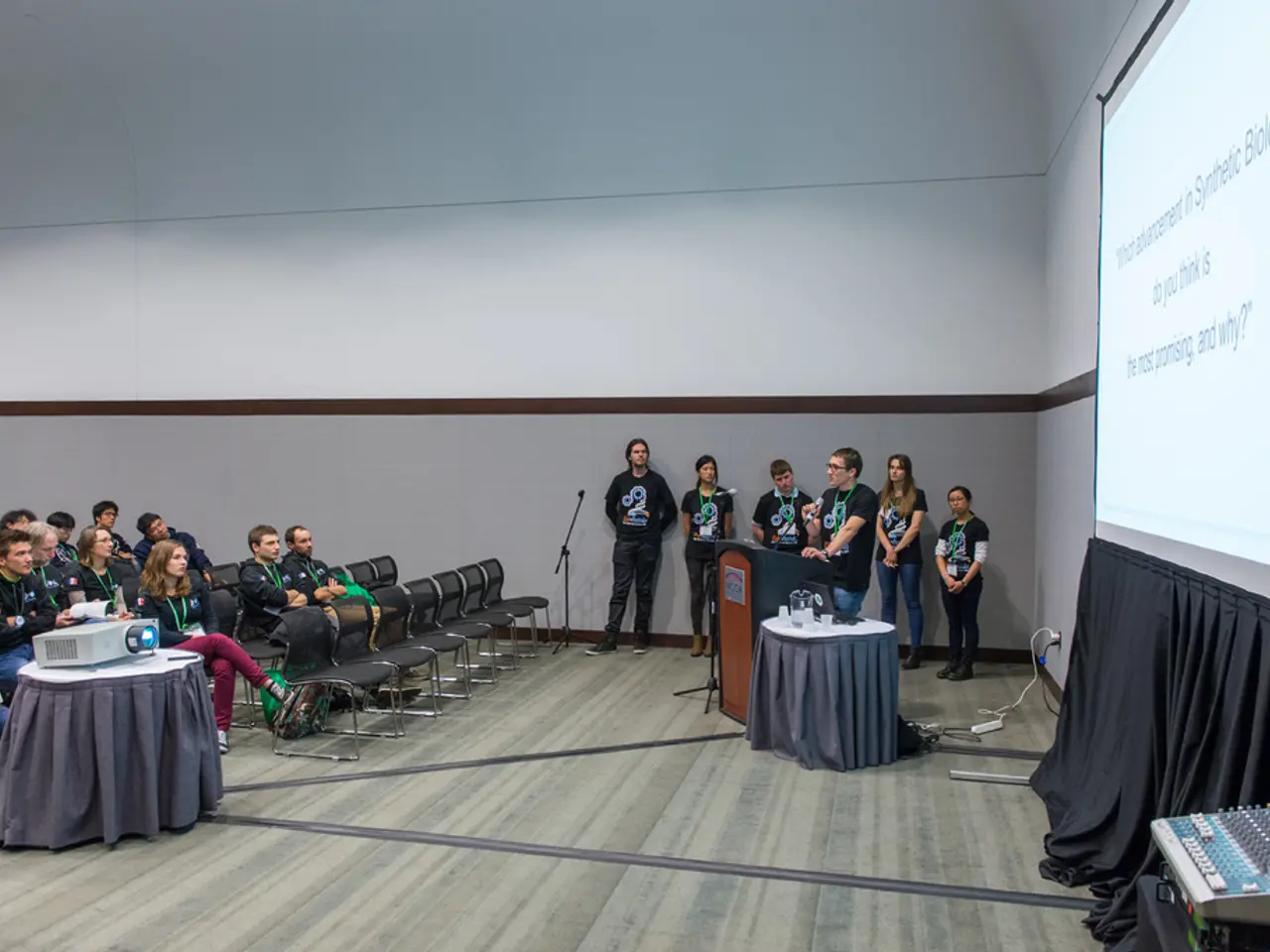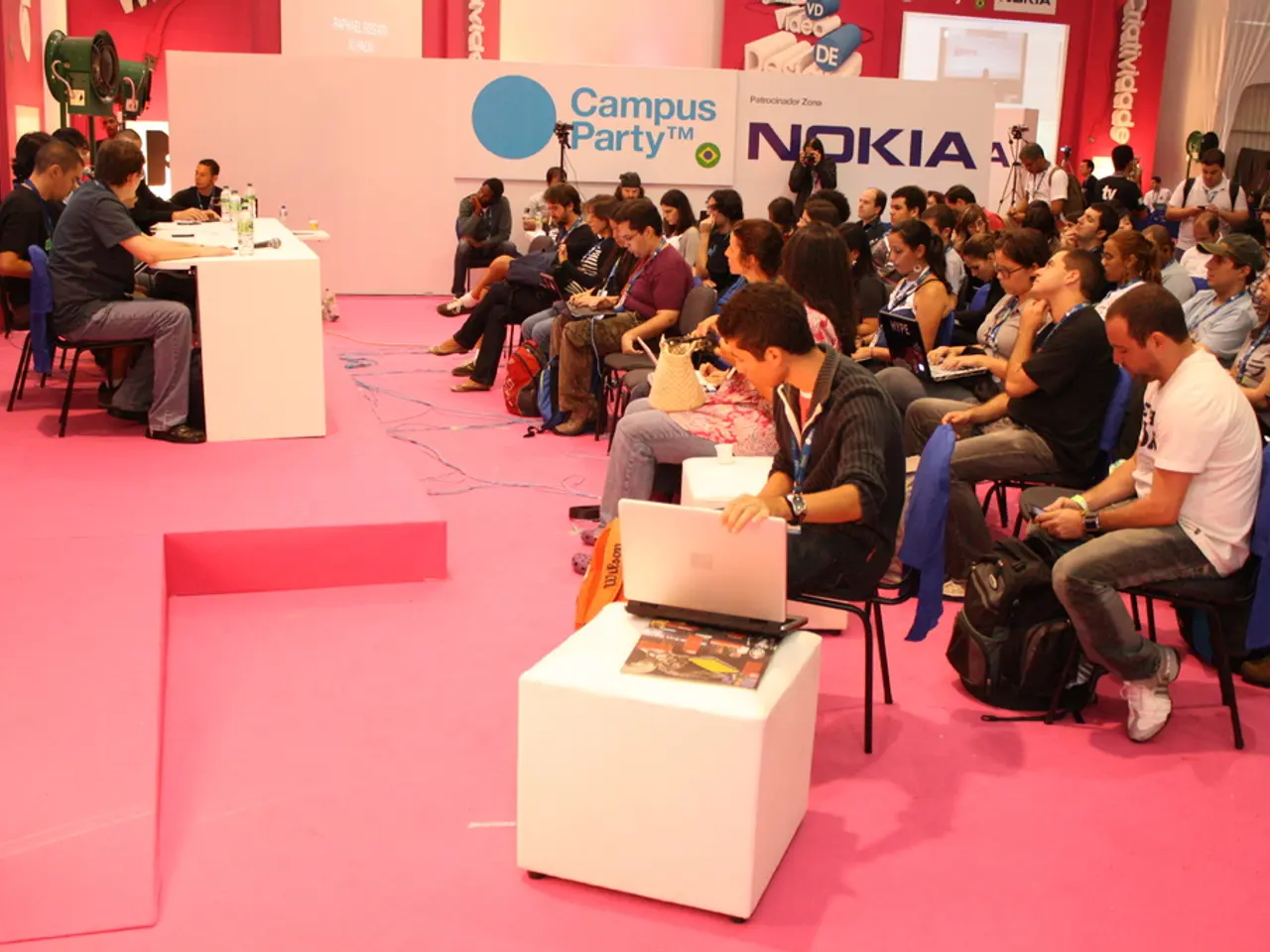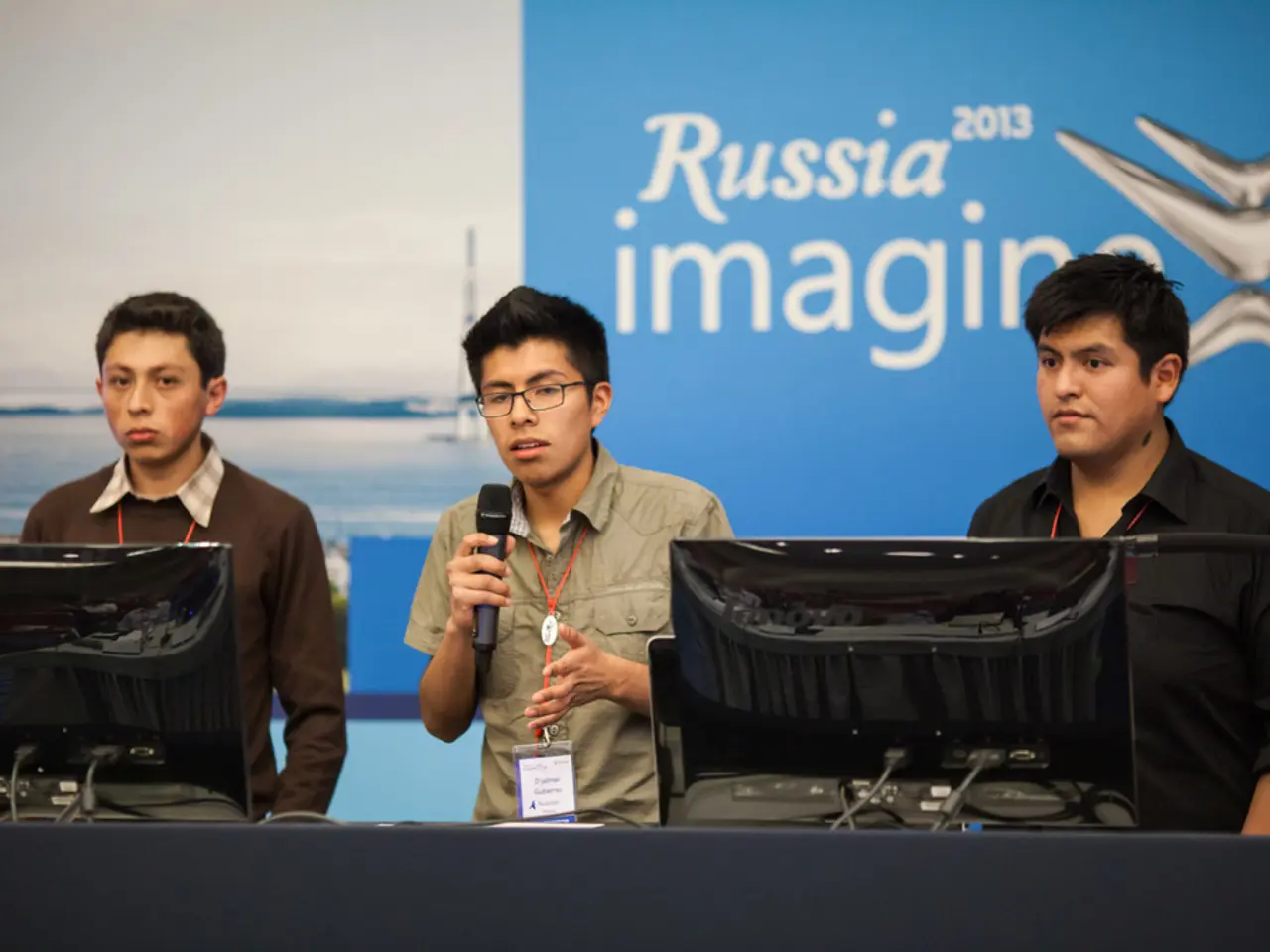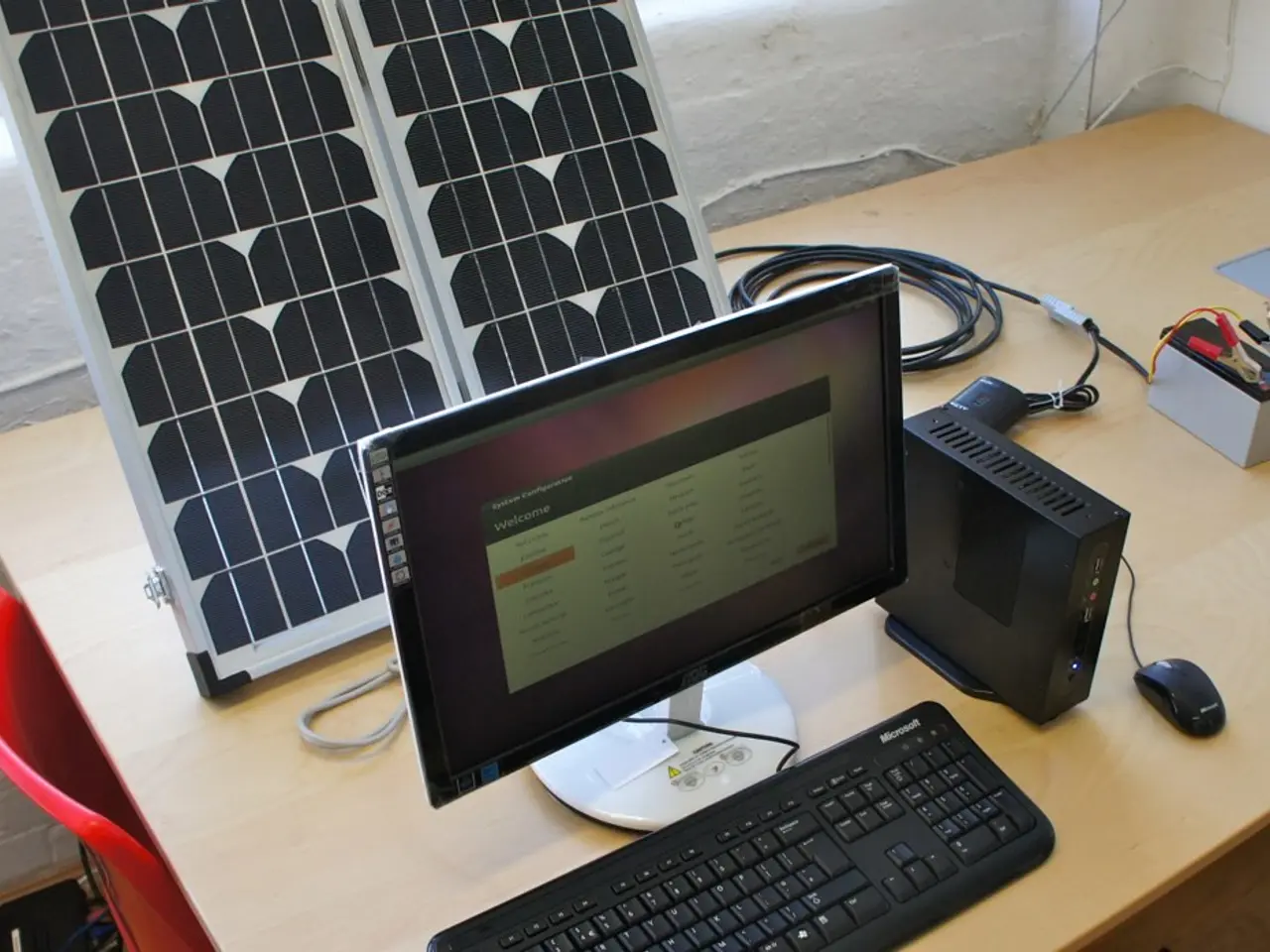Immersion-based Corporate collaboration through Virtual Reality experiences
In the ever-evolving world of technology, Virtual Reality (VR) is set to play a significant role in enhancing remote team building and collaboration. This immersive technology offers a solution for maintaining a sense of community and connection within remote teams, bridging the gap created by geographical separation.
VR creates an immersive, three-dimensional environment that simulates physical presence, a feature traditional video calls cannot match. This sense of being "physically present together" fosters stronger interpersonal connections, making collaborative activities like writing, brainstorming, and meetings feel more alive and engaging.
Compared to flat video calls, VR enables team members to interact in real time within virtual spaces where they can manipulate objects, share documents, and collaborate more naturally. This immersive interaction strengthens team dynamics and enhances communication by providing a shared work environment that feels tangible.
Moreover, VR team-building activities improve morale, foster trust, encourage creativity, and establish a communal work ethic based on interdependence, which is crucial for remote teams that might otherwise feel isolated. VR’s immersive nature can reduce feelings of isolation by creating a more vivid sense of community and engagement.
With impending advances such as AI integration, VR environments are expected to become even more realistic and effective at replicating in-person collaboration, potentially making VR a permanent fixture in remote work settings.
VR is not just limited to social bonding; it's also a powerful tool for developing leadership skills and improving communication and trust. VR simulations can be used for leadership development, allowing employees to practice decision-making and team coordination in high-pressure situations.
Examples of VR team-building activities include VR coffee breaks, team quizzes, VR training, and VR team-building games. These activities can be accessed from anywhere, eliminating location inconvenience. With just a few headsets, VR team-building events can be organized without the need for all employees to travel to a particular location.
The immersive nature of VR accelerates the process of building trust and relationships by simulating real-world challenges and opportunities for teamwork. VR allows teams to bond, collaborate, and develop critical skills without the need for physical presence.
Embracing VR now can help companies stay ahead of the curve, enhance team dynamics, and foster a more collaborative and innovative workforce. Virtual Reality is revolutionizing team-building, offering innovative solutions for remote and hybrid work environments.
Gadgets that harness technology, like VR headsets, are essential tools for enriching remote team collaboration and building relationships. These gadgets create immersive virtual environments where team members can interact in real time, fostering stronger connections and improving communication.
With the integration of AI and the development of VR simulations, these technology-driven gadgets will become more sophisticated, providing even more realistic and effective ways to collaborate and develop leadership skills, setting new standards for remote work.




